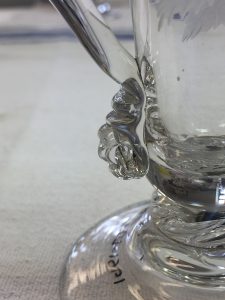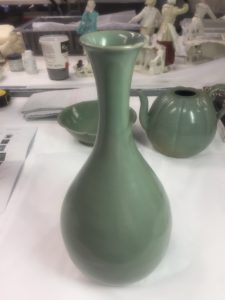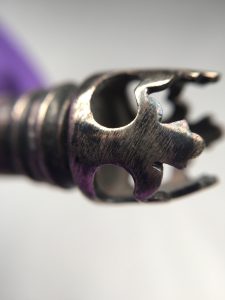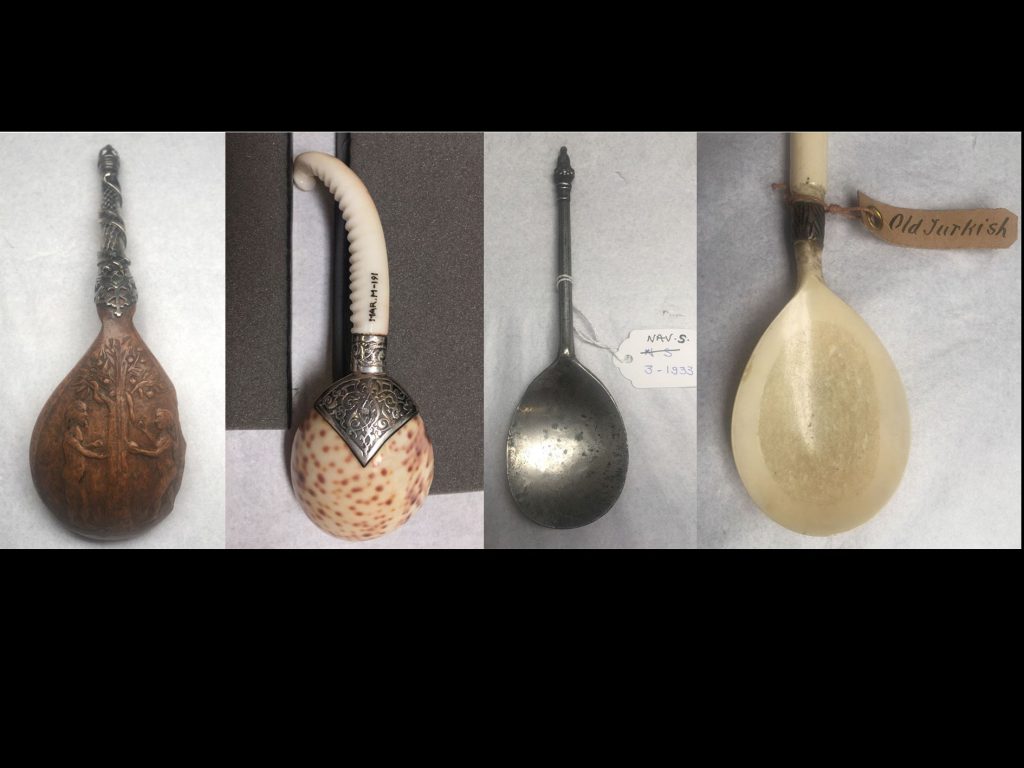I have recently started a 9-month internship at the Fitzwilliam Museum as part of my MSc in Conservation for Archaeology and Museums at University College London. Working with both the Applied Arts and Antiquities teams I will contribute to the preservation needs of the departments’ collections. Having spent just under 2 months in this placement, I have already learned a great deal, not only about objects and materials but also about general museum practice. My placement supervisor, Antiquities conservator Jennifer Marchant, identified a number of projects for me to work on. They are varied and I get to participate in a range of activities within the Museum, including preventive and remedial conservation, collections care and management, and material analysis using specialized techniques. This work plan is not set in stone and can be modified if necessary, giving me the opportunity to sign up for new projects that may arise down the line.
My first few weeks were mostly spent in becoming acquainted with the collections and members of staff, as well as helping out wherever an extra pair of hands was needed. Conservation work during this time centred on cleaning glass objects for an exhibition in 2019 and assessing the condition of wooden furniture. This was my first direct experience with glass and I was pleased to discover a new interest in it. The objects served as a fitting introduction to the material as they were in excellent condition. To my surprise some of the items were over 200 years old but I never would have suspected this as they had been cared for so well. The experience of working with furniture was enlightening in terms of the signs of damage that appeared and the relationship between their location and the function of the items during their lifetimes. Photographs were required for the reports and this proved a challenging but edifying exercise since the space lacked proper lighting and I had to rely on natural light.


Aside from cleaning a small group of twelfth- and thirteenth-century Korean ceramics that is going on loan to the National Museum of Korea, I have had the chance to treat an ancient ceramic from Cyprus. This earthenware, categorized as a red-polished ware which is specific to the Cypriot Bronze Age, is a ritual vessel with incised decoration that has been inlaid with a white material. The anthropo-zoomorphic symbols of the decoration offer a fascinating glimpse into the beliefs and values of this early community. One of the finials shaped like a bull’s head had broken off and required reattachment. Though this was a straightforward treatment, I found it tremendously gratifying to contribute to the preservation of this ancient ceramic. While investigating the earlier work carried out on this object, I read the conservation file written by the last conservator who had performed an intervention. I could not help feeling a sense of kinship with this colleague, unknown to me, who contributed to the safeguarding of the same artefact over 20 years ago.

Another memorable project I am working on is also for an upcoming exhibition. This is one of my favourite assignments so far. I was given a collection of spoons that are to be displayed together and tasked with identifying the materials they are made of, as well as choosing appropriate treatments to meet their conservation needs. Some only require light cleaning while others have to be stabilised structurally. In addition to this, I will share recommendations about the display mounts and suitable materials for them. This project is most appealing because it is like a crash course in conservation, requiring me to use a wide range of skills relevant to conservation practice on a variety of materials (ivory/bone, metal, wood, glass, ceramic, and shell).

Two months have not yet passed since I started my internship at the Fitzwilliam and the experience has already proved to be beyond price in terms of educational value. I have been extremely fortunate to be allowed to experience so many different areas of museum practice. My interests within the heritage sector are broad and varied: with this placement, I certainly feel that I am able to explore different roles and diversify my skills.
I must express my gratitude first to my UCL supervisors, who recommended this internship to me, and to my internship supervisor, for taking my requests and interests into consideration when arranging my work plan. I appreciate its flexibility as well, especially considering that as a student I am eager to experience as many areas as possible to further develop my skills and identify new interests. I am also grateful to all the staff who have been so welcoming and have graciously allowed me to join in tours, conferences, and meetings where I have caught a glimpse of the behind-the-scenes work in the Museum. I am fortunate to have been offered this placement and look forward to the work that is to come.
Maria Melendez, UCL conservation intern
